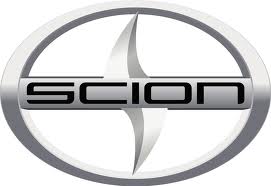xB L4-2.4L (2AZ-FE) (2009)
/Page-2153016.png)
2. CUSTOMER PROBLEM ANALYSIS
(a) Ask the customer about the conditions and environment when the problem occurred.
NEXT -- Continue to next step.
3. INSPECT BATTERY VOLTAGE
Standard voltage:
11 to 14 V
If the voltage is below 11 V, recharge or replace the battery before proceeding.
NEXT -- Continue to next step.
4. SYMPTOM CONFIRMATION AND DTC (AND FREEZE FRAME DATA) CHECK
(a) Visually check the wire harnesses, connectors and fuses for open and short circuits.
(b) Warm up the engine to the normal operating temperature.
(c) Confirm the problem symptoms and conditions, and check for DTCs.
Result:
B -- Go to step 6
A -- Continue to next step.
5. DTC CHART
(a) Check the results obtained in the DTC check. Then find the output DTC in the DTC chart. Look at the "Trouble Area" column for a list of
potentially malfunctioning circuits and / or parts.
NEXT -- Go to step 7
6. PROBLEM SYMPTOMS TABLE
(a) Check the results obtained in the symptom confirmation. Then find the problem symptoms in the problem symptoms table. Look at the
"Suspected Area" column for a list of potentially malfunctioning circuits and / or parts.
NEXT -- Continue to next step.
7. CIRCUIT INSPECTION OR PARTS INSPECTION
(a) Confirm the malfunctioning circuit or part.
NEXT -- Continue to next step.
8. ADJUST, REPAIR OR REPLACE
(a) Adjust, repair or replace the malfunctioning circuit or parts.
NEXT -- Continue to next step.
9. CONFIRMATION TEST
(a) After the adjustment, repairs or replacement, confirm that the malfunction no longer exists. If the malfunction does not reoccur, perform a
confirmation test under the same conditions and in the same environment as when the malfunction occurred the first time.
NEXT -- END
2. CUSTOMER PROBLEM ANALYSIS
HINT:
-
In troubleshooting, confirm that the problem symptoms have been accurately identified. Preconceptions should be discarded in order to
make an accurate judgment. To clearly understand what the problem symptoms are, it is extremely important to ask the customer about the
problem and the conditions at the time the malfunction occurred.
-
Gather as much information as possible for reference. Past problems that seem unrelated may also help in some cases.
-
The following 5 items are important points in the problem analysis:
3. SYMPTOM CONFIRMATION AND DIAGNOSTIC TROUBLE CODE
HINT:
The diagnostic system in the SCION xB has various functions.
-
The first function is the Diagnostic Trouble Code (DTC) check. A DTC is a code stored in the ECU memory whenever a malfunction in
the signal circuits to the ECU occurs. In a DTC check, a previous malfunction's DTC can be checked by a technician during
troubleshooting.
-
Another function is the Input Signal Check, which checks if the signals from various switches are sent to the ECU correctly.
By using these functions, the problem areas can be narrowed down and troubleshooting is more effective. Diagnostic functions are
incorporated in the following system in the SCION xB.
